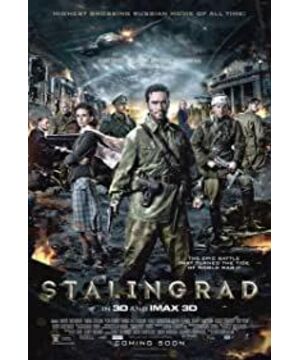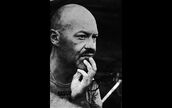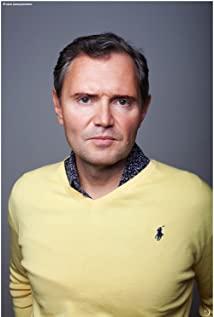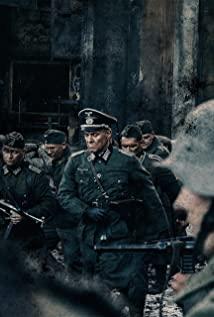Text / Wu Shaoxu
Originally published in Wenzhou Evening News
As one of the victims of World War II, the former Soviet Union played an extremely important and tragic role in that tragic war. The Battle of Stalingrad, together with the Battles of Midway and El Alamein, not only constituted an important turning point in the Second World War, but also was unique in human history. The huge casualties and damages were remembered by future generations. This deep-rooted despair and cruelty not only destroys the huge city, but the nightmare it causes to the living life and soul is hard to be erased by the long river of time.
The film "Stalingrad" is based on the famous battle, telling the story of a reconnaissance team under the command of Yankov Pavlov who occupied an apartment in the center of the city on the Volga River and fought to the death against the German army.
At the beginning of the film, the Red Army crossed the Volga River at night, and with the help of long shots, the gray-black river surface, the sky dyed red by artillery fire, and the dark-colored high-rise buildings merged together, presenting a land ravaged by war to the audience. What shocked and depressed me even more was that after the failure of the sneak attack, the burning Red Army soldiers rushed out from the horizon, with painful but determined expressions, roaring and rushing towards the German defense line for the last blow. War is always so decisive, hope and despair, hatred and helplessness, anger and screaming are intertwined! Distortion isn't just that face on fire.
The WWII films of the former Soviet Union from the 1940s to the 1980s all highlighted the magnificent war scenes and tragic death-and-death battles, such as the trilogy of the Great Patriotic War - "Battle of Moscow", "Liberation", and "The Bloody Battle of Stalingrad". At that time and even now, the rendering of the atmosphere and big scenes of war is no less than that of any American war film. But "Stalingrad" is different from these mainstream war movies. The film did not put the pen and ink on the panoramic view of the Battle of Stalingrad, but chose to depict the war in a way of "seeing the big from the small", starting from a few soldiers. The inexplicable emotional story between Katya, a 19-year-old Russian girl who lives alone in a lonely building, describes the disaster the war has brought to a generation. At this point, it is the life-and-death confrontation between two snipers in "Come on the City" starring Jude Law. , the pure Hollywood-style narrative of personal love and hatred among friends has a broad vision, but it is somewhat similar to "The Dawns Here Are Quiet".
The biggest difference between "Stalingrad" and the previous films reflecting the Great Patriotic War is that the film has created an image of a German officer with a rich character and added a second perspective to the film, which has raised a level in the ideological theme. This reminds me of Clint Eastwood's "Flag of the Fathers" and "Letter from Iwo Jima". A battle, two perspectives, is like the A side and the B side of a story, and neither side is complete. War is not only a tragic and magnificent scene, but also a soft individual soul.
Sadly, Stalingrad is a huge step short of true depth. The film spends too much time describing the state of the characters in the narration. The battle that should have been life-and-death seems to be fought on an occasional whim, resulting in the rapid changes of the plot and the rapid changes in the soundtrack. For most of the film, they talk about life in their own way, and they take turns to entangle with Katya, and then enjoy the leisure time that seems a little embarrassing but lazy.
View more about Stalingrad reviews











